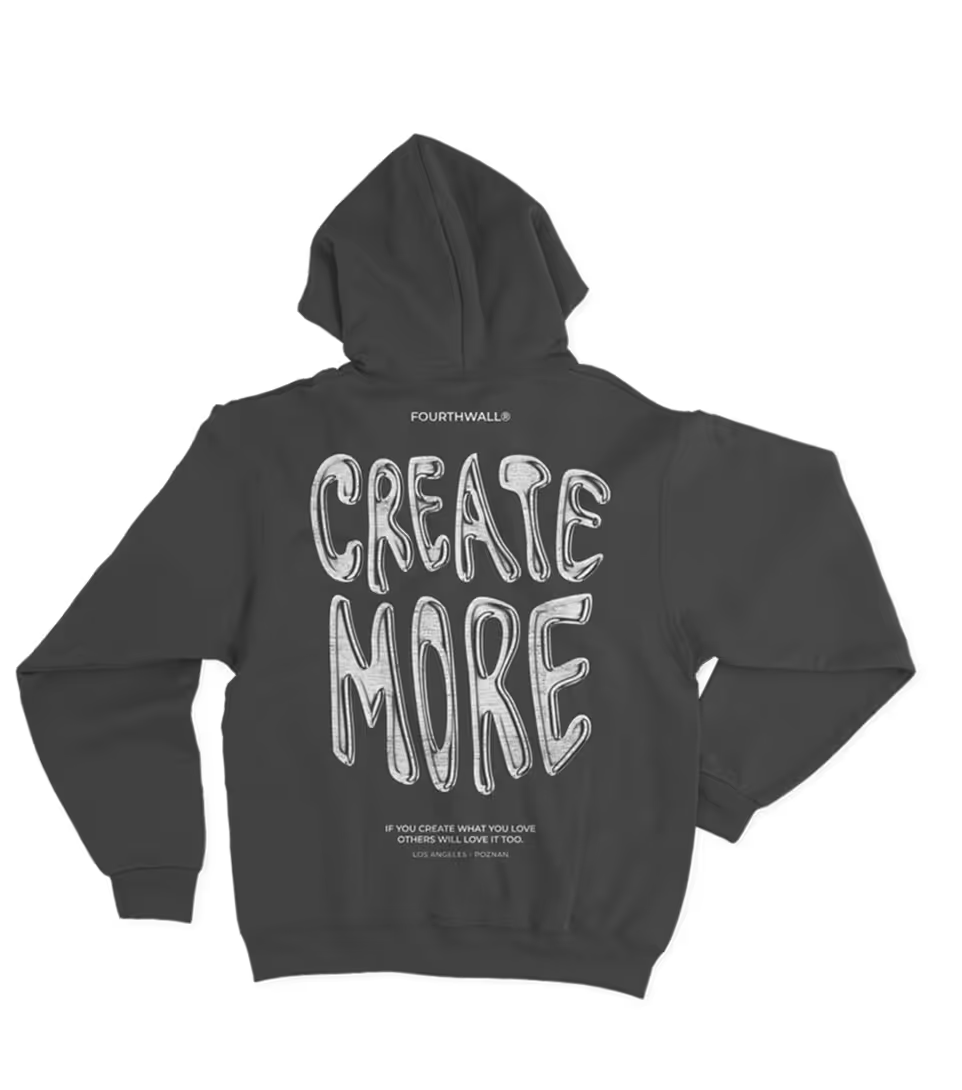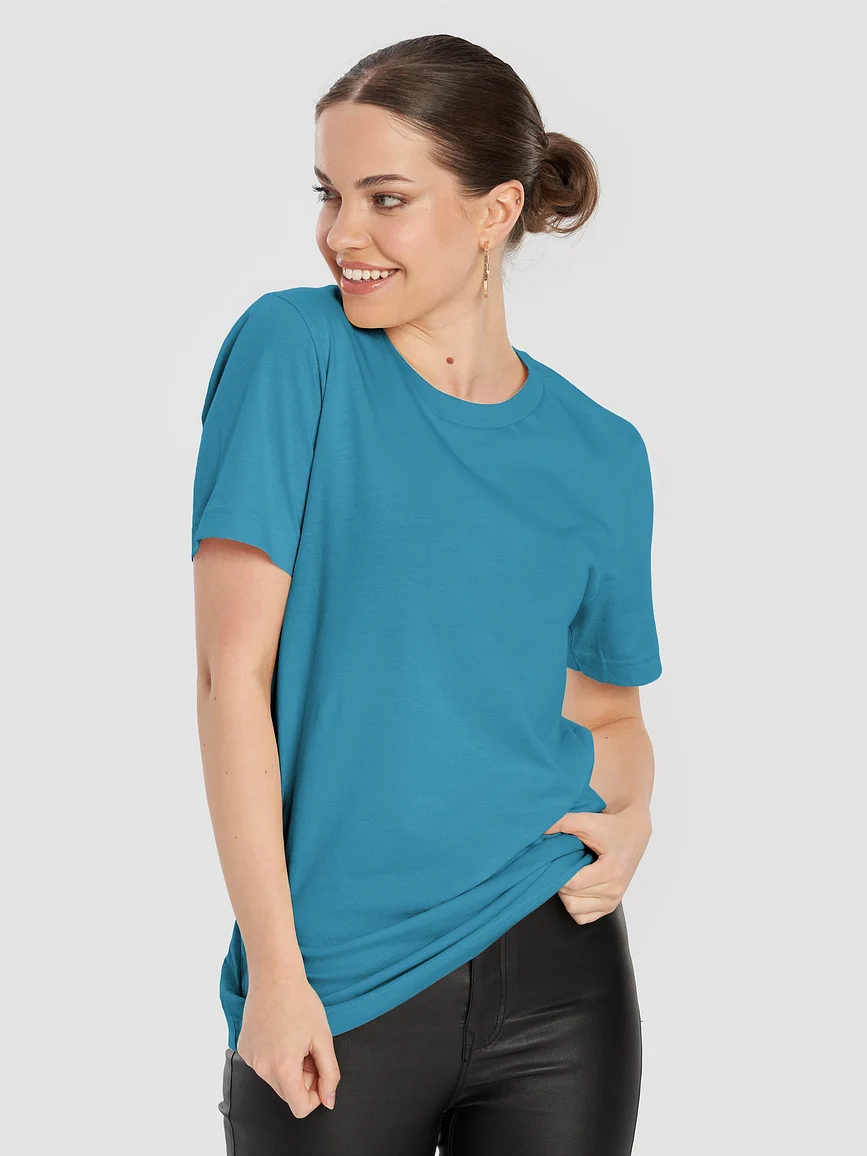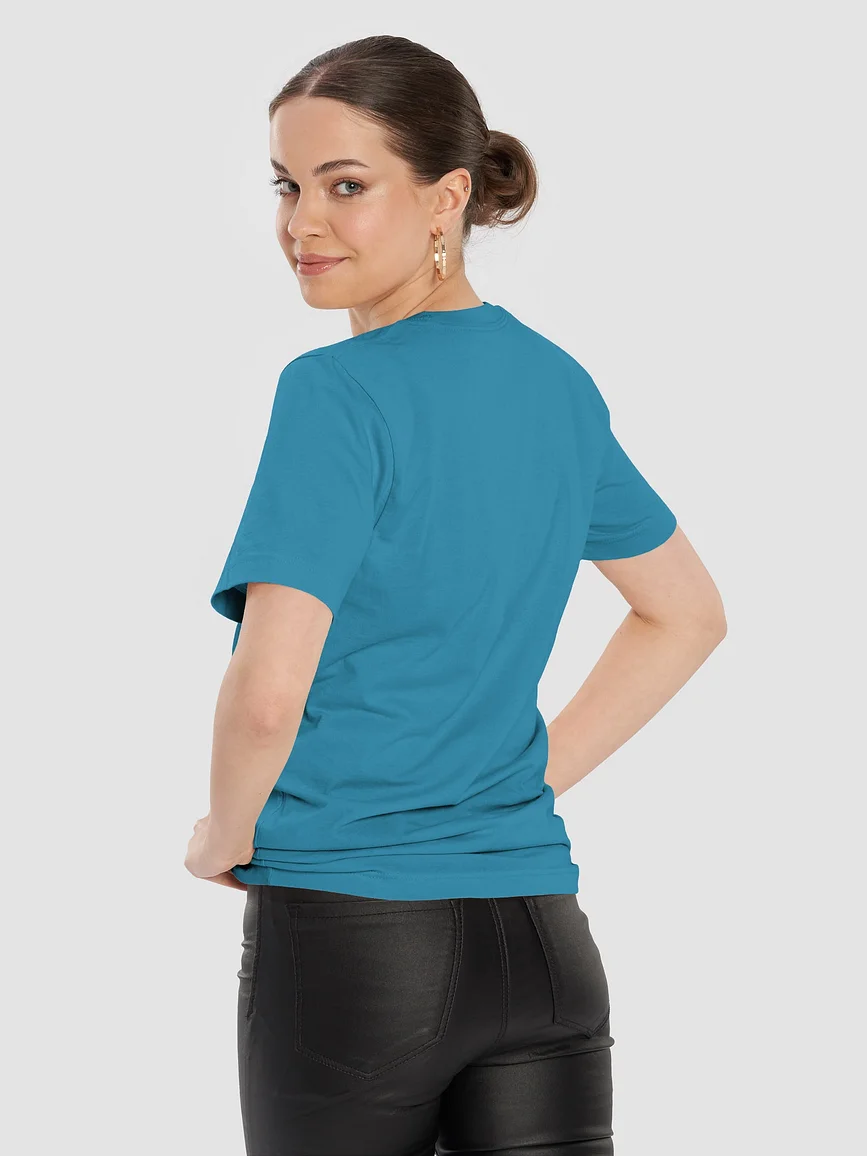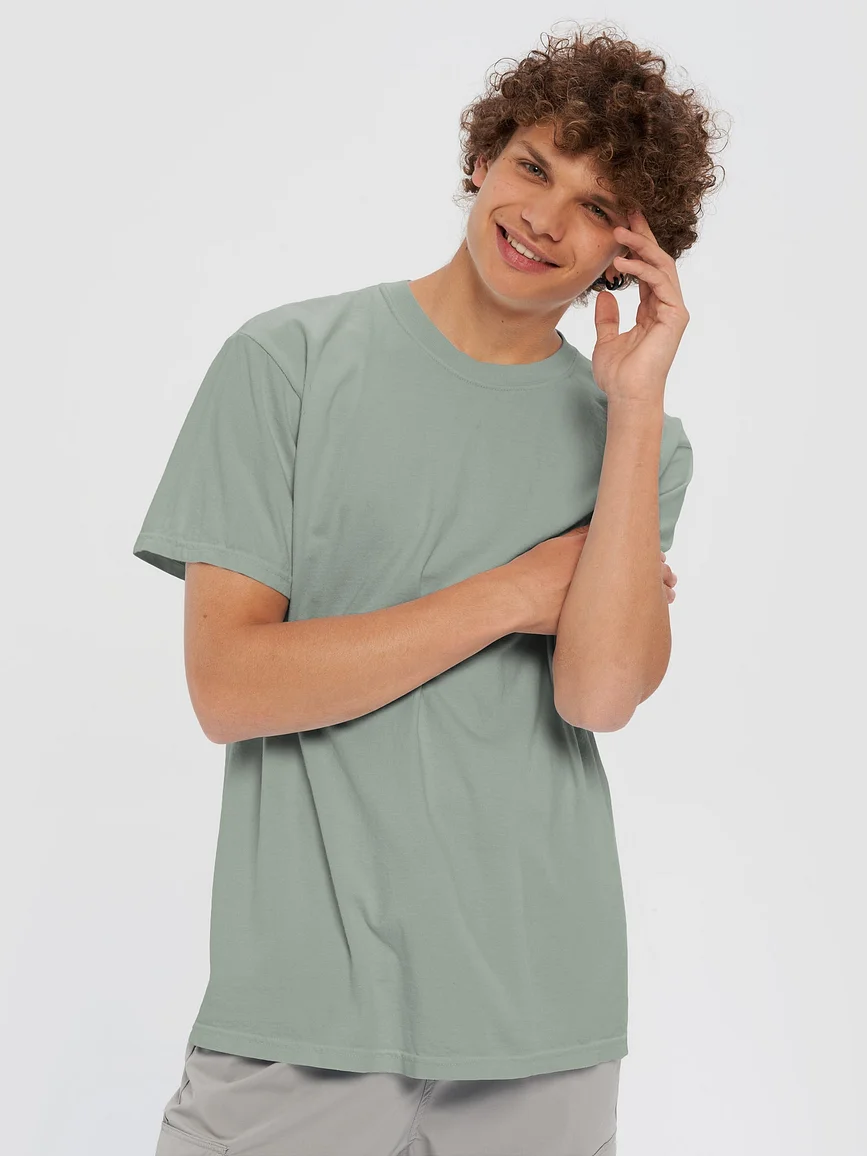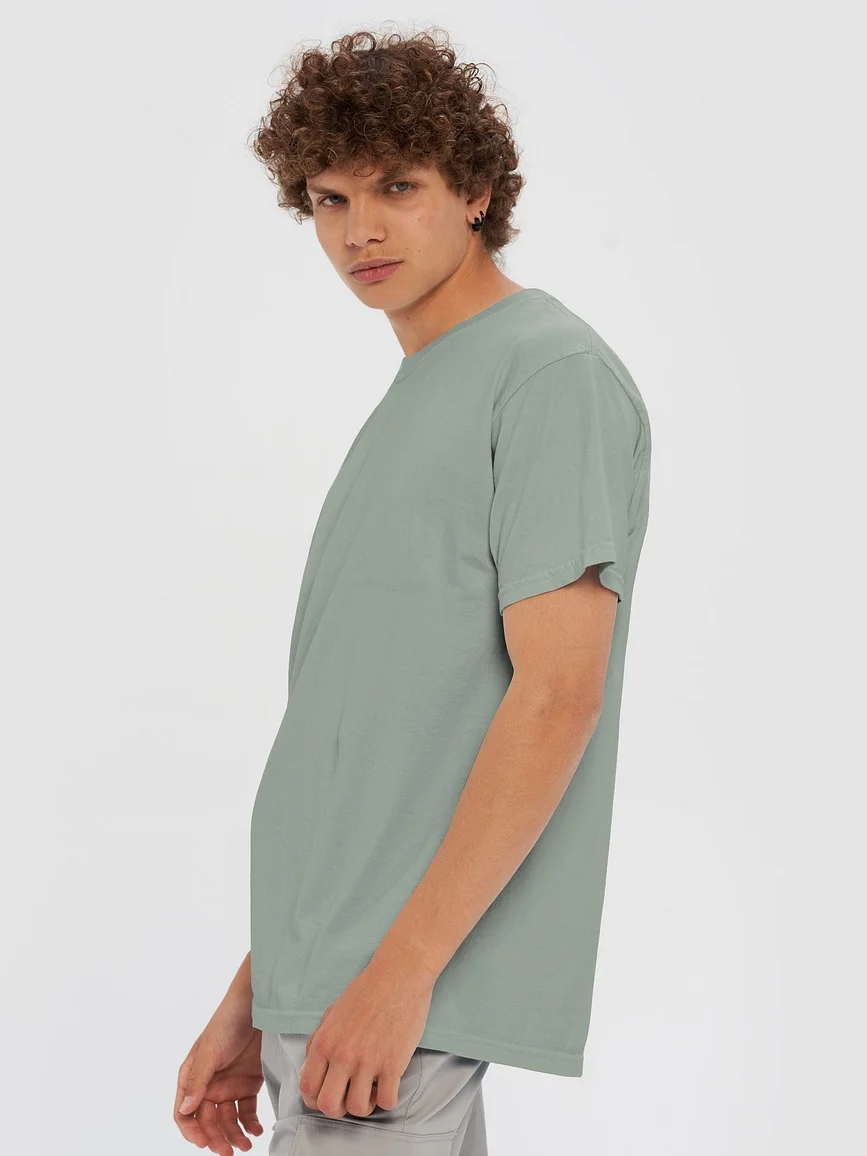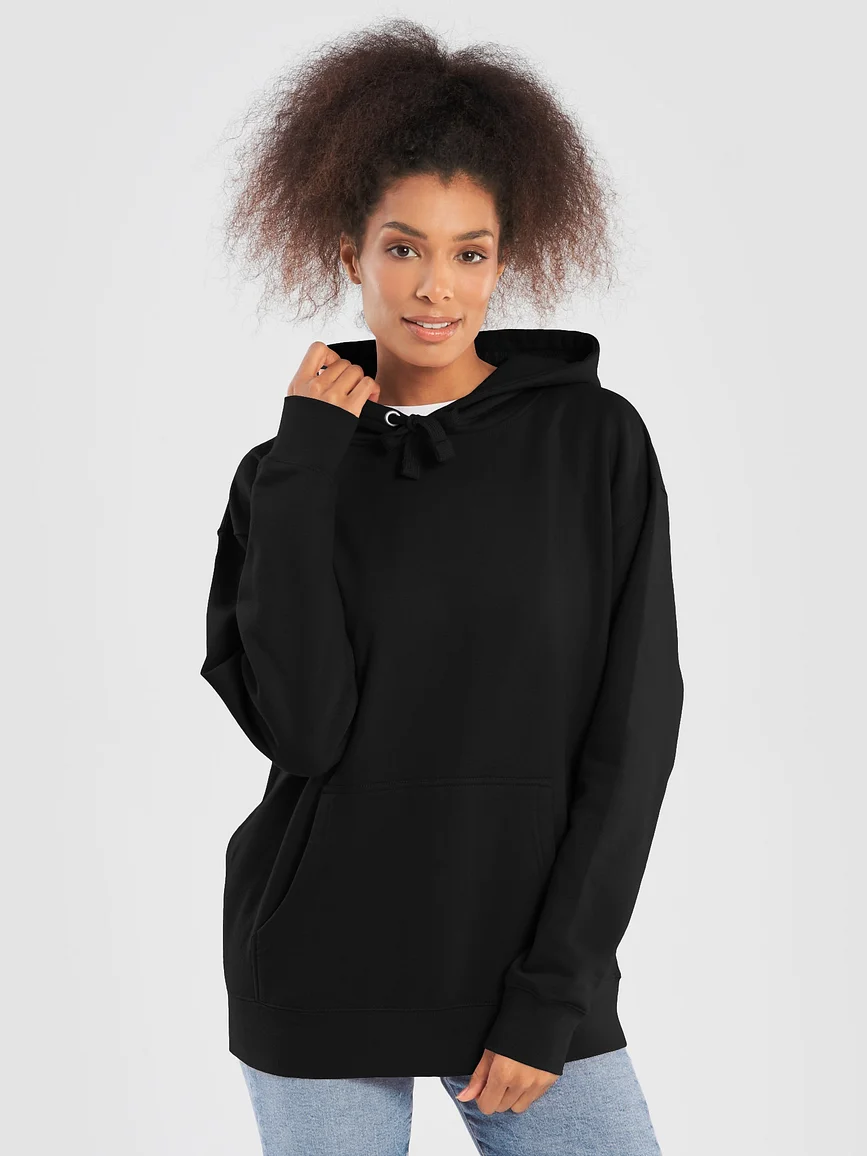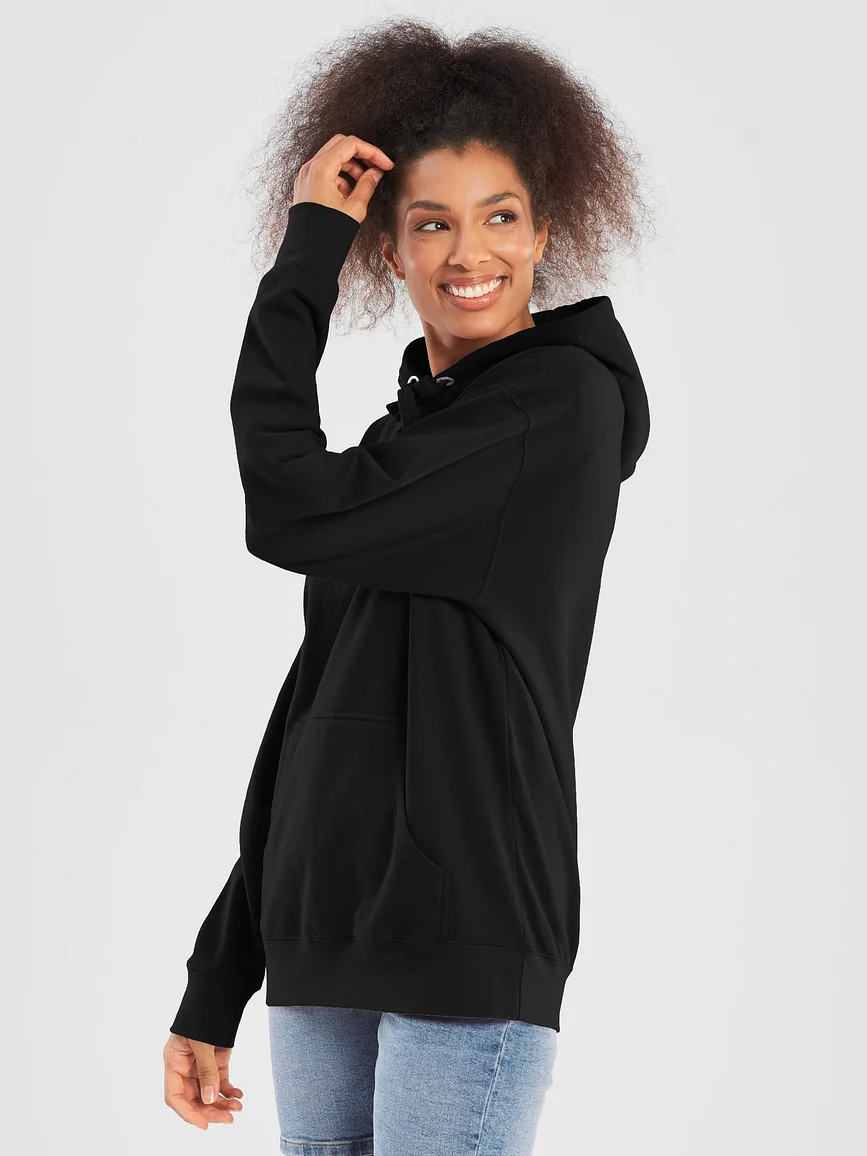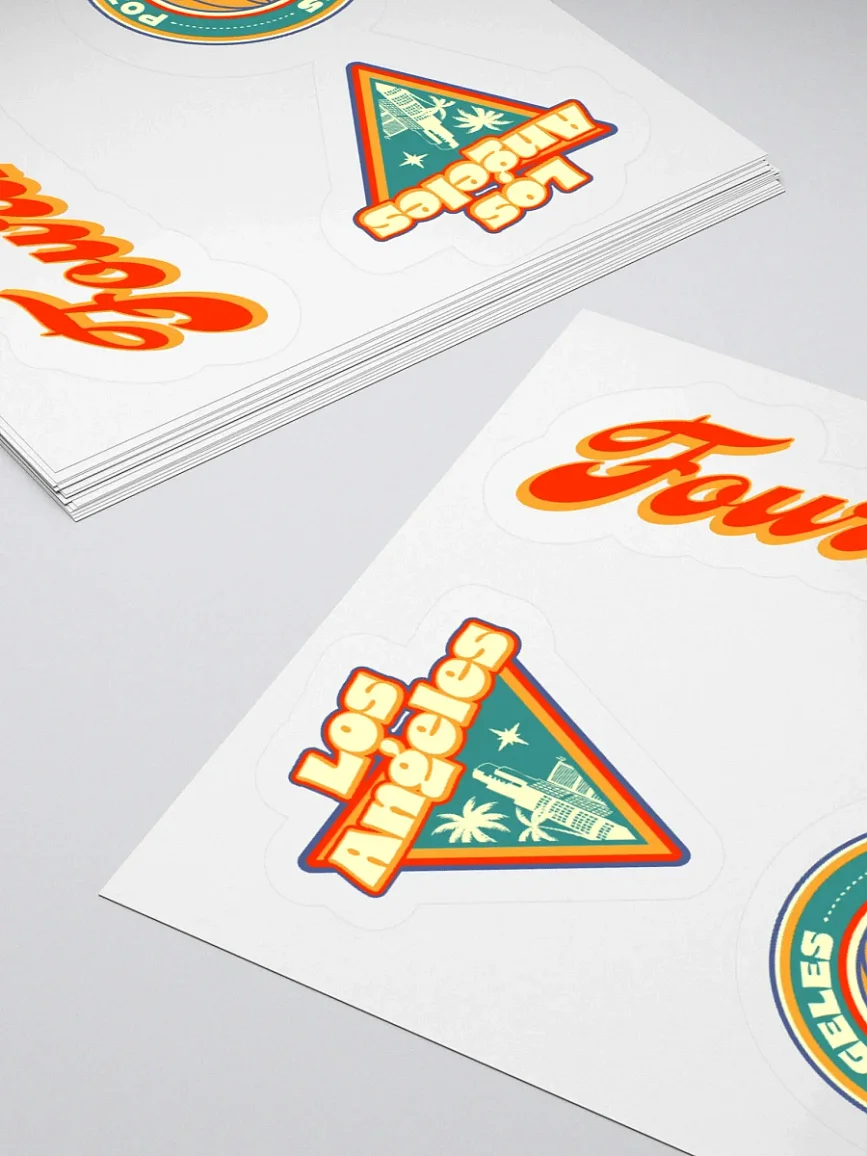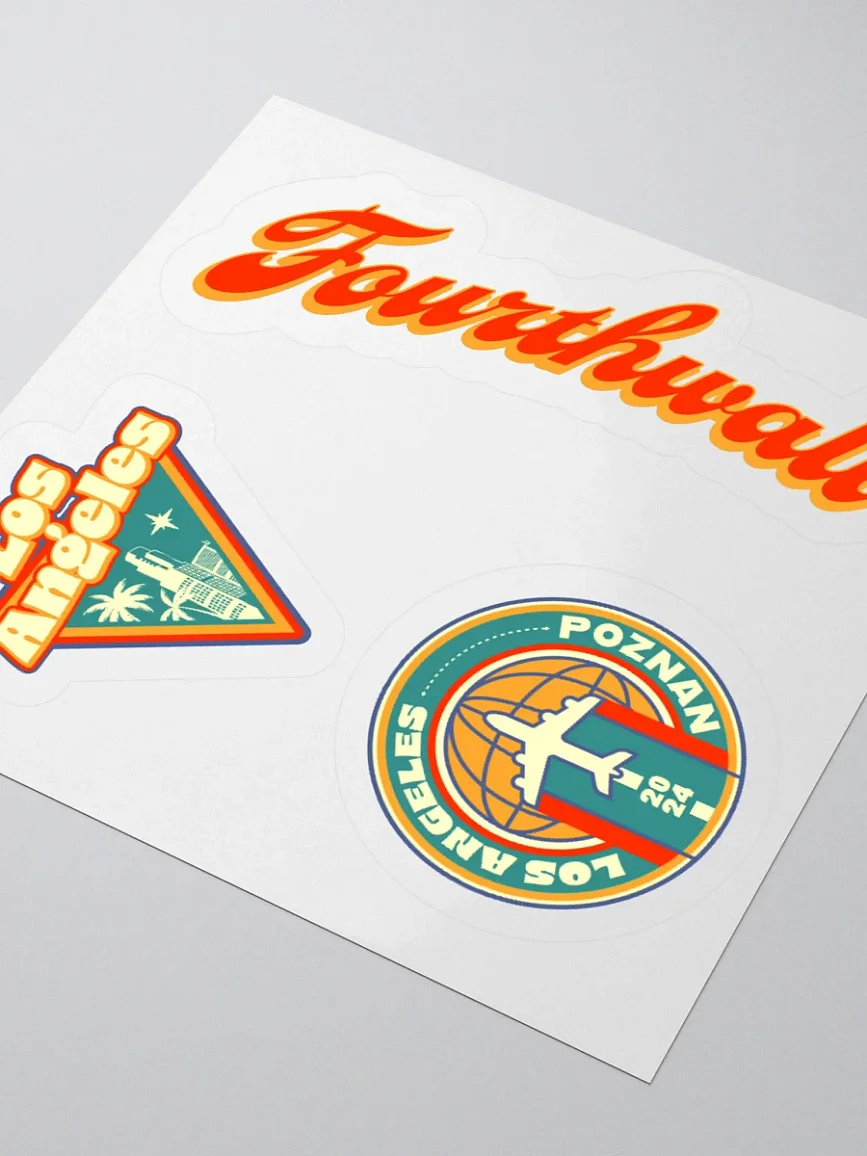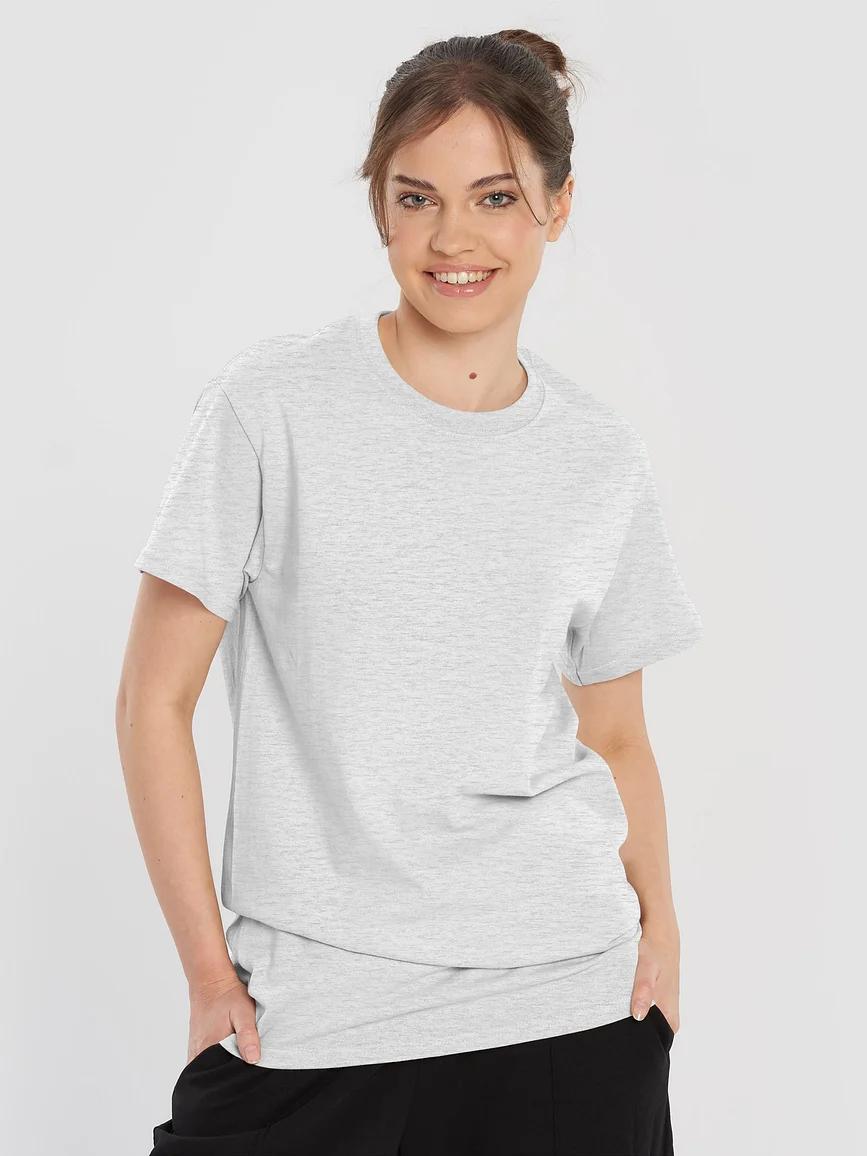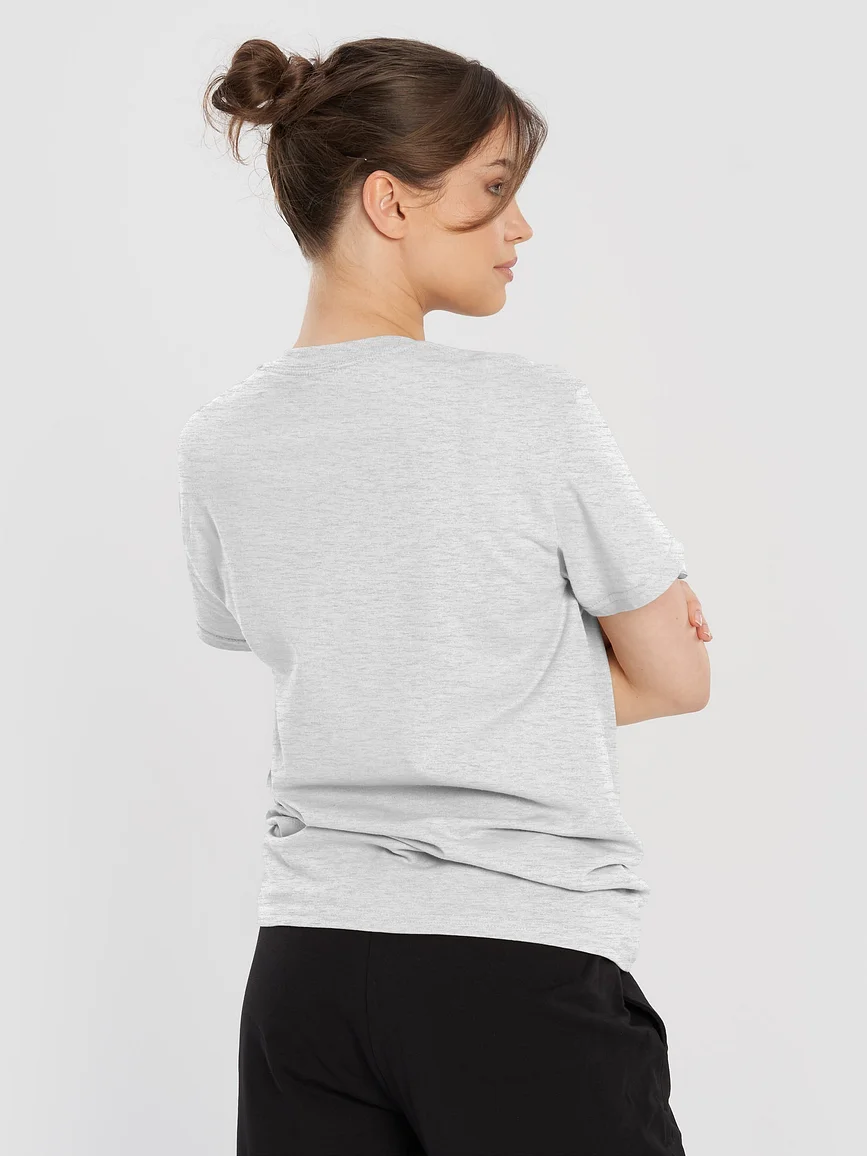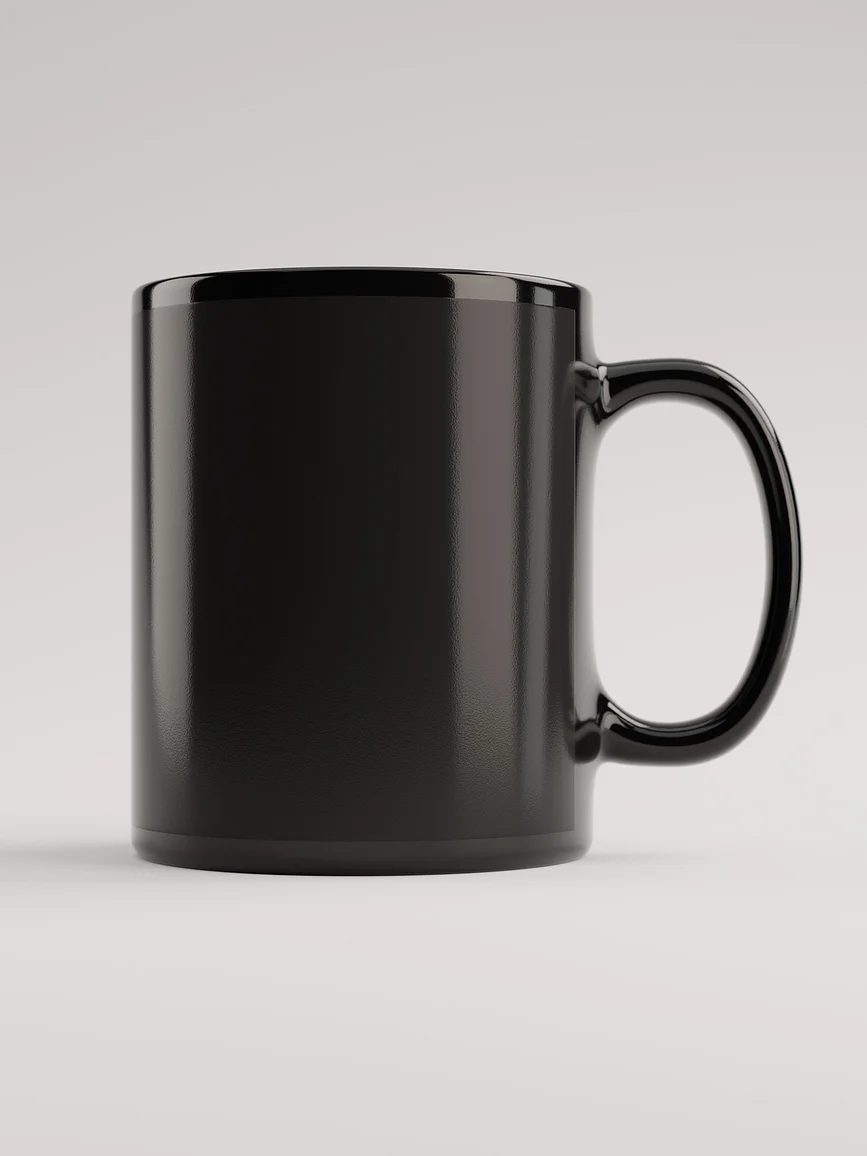How to Become a Content Creator in 2025: Step-by-Step Guide
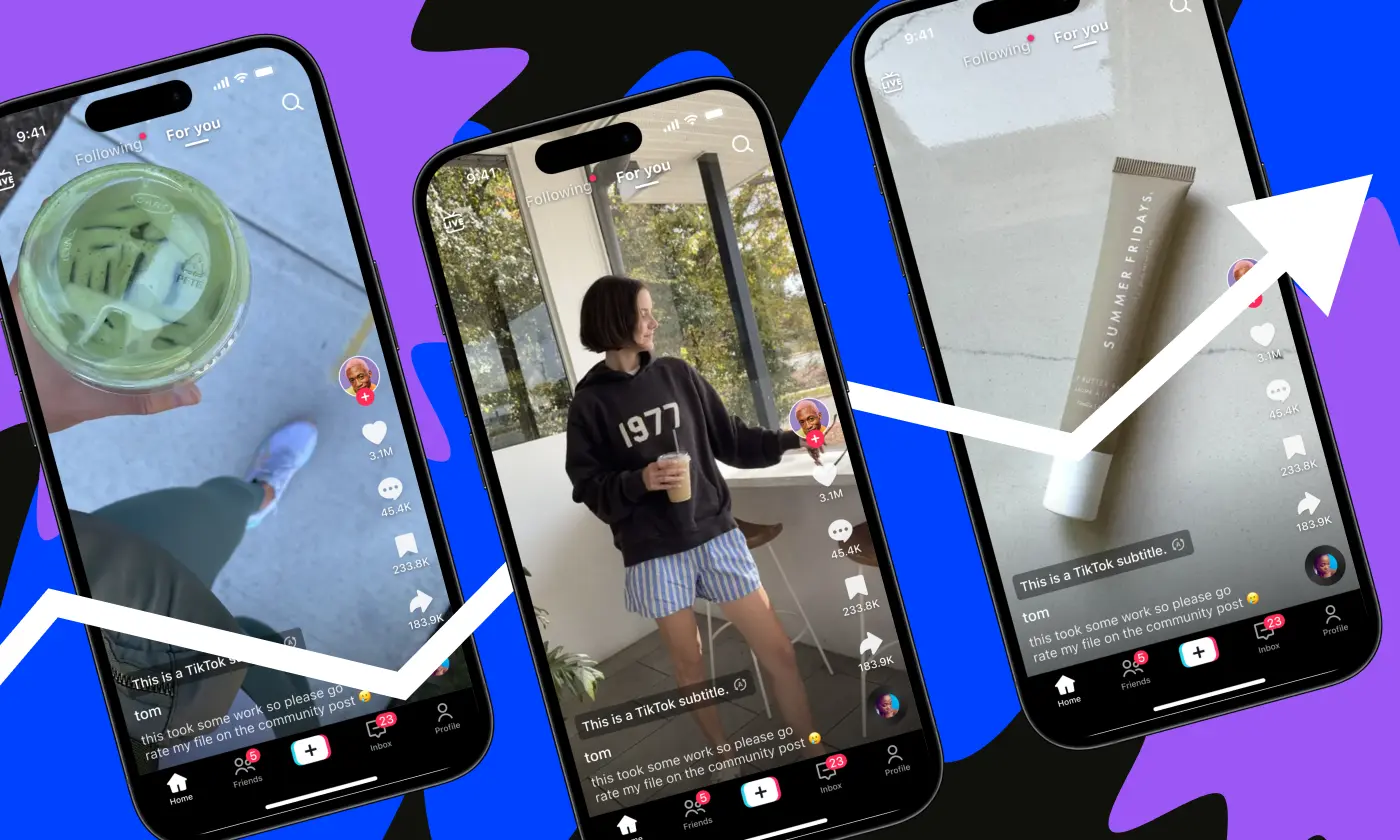
The creator economy is booming, with new opportunities emerging every day for individuals to make their mark as content creators on popular platforms like TikTok, Instagram, and YouTube.
With social media continuing to expand into mainstream media, content creation has become a viable career for anyone looking to share their unique skills, stories, or knowledge.
But for new creators just starting out in the industry, figuring out where to begin might be a little overwhelming.
This guide will walk you through everything a beginner needs to know to start content creation, including how to choose a niche, select content types, gather essential tools, and grow an engaged following.
What is Content Creation?

Content creation is the process of crafting engaging and valuable material tailored to a specific audience and distributed across digital platforms to inform, entertain, or inspire.
It is an endlessly flexible medium, allowing content creators to experiment with different formats, styles, and platforms while being able to connect with their audience authentically.
Thanks to social media platforms like TikTok, Instagram, YouTube, and X, creators have several avenues to express their content and artistry, allowing them to reach global audiences and build meaningful communities around shared interests.
Here are some popular types of content you can create:
- Videos: Short or long-form videos dominate platforms like YouTube, TikTok, and Instagram Reels. Examples include tutorial videos, vlogs, product reviews, or creative storytelling like Casey Neistat’s travel vlogs or Charli D’Amelio’s dance clips.
- Blog Posts: Written content is perfect for sharing expertise, insights, or personal stories. Lifestyle blogs, recipe collections, and niche guides like those found on The Pioneer Woman are popular examples.
- Photography: Stunning visuals can tell stories or evoke emotion. Photographers use platforms like Instagram, Pinterest, or Flickr to showcase their work, whether it’s wildlife shots, fashion photography, or creative portraits.
- Social Media Posts: Bite-sized content on platforms like Twitter, Facebook, or LinkedIn can spark engagement. These range from trending memes to thought-provoking threads, such as Humans of New York’s heartwarming Facebook stories or Neil deGrasse Tyson’s educational tweets on X.
- Podcasts: Audio content allows creators to dive deep into topics from true crime to entrepreneurship. Think of shows like The Joe Rogan Experience or My Favorite Murder.
- Infographics: Visually engaging and highly shareable, infographics simplify complex information. Creators often use them for educational content, as seen in health or finance-focused posts on Pinterest.
- Live Streams: Real-time interaction with audiences builds community and engagement. Popular among gamers on Twitch or Q&A hosts on YouTube Live, this format invites instant feedback.
Why Content Creation is a Great Opportunity Today
Content creation has evolved into one of the most exciting and accessible career paths of the digital age, opening the door to unparalleled monetization opportunities.
With the rise of the creator economy, individuals from all walks of life can transform their passions into income streams by sharing engaging content on platforms like TikTok, YouTube, and Instagram. This economy empowers creators to build a targeted audience and generate revenue through ad revenue, brand partnerships, affiliate marketing, exclusive content, and even selling their own products.
What makes content creation so appealing today is the sheer flexibility it offers. You can choose a niche that aligns with your interests and expertise—whether it’s travel, beauty, tech, or fitness—giving you the freedom to create content you’re truly passionate about.
Platforms now provide built-in monetization tools, such as TikTok’s Creator Rewards Program and YouTube’s Partner Program, allowing creators to earn income directly from their content’s views, engagements, and performance. For example, a creator on TikTok can monetize their viral dance videos while simultaneously earning affiliate commissions on featured products.
Moreover, content creation serves as a gateway to entrepreneurial ventures. Many creators leverage their audience to launch their own brands, sell merchandise, or create digital products like courses and eBooks. This self-driven career path not only creates financial independence for individuals but also allows creators to express themselves authentically and connect with like-minded communities.
Selecting Your Platform and Content Type
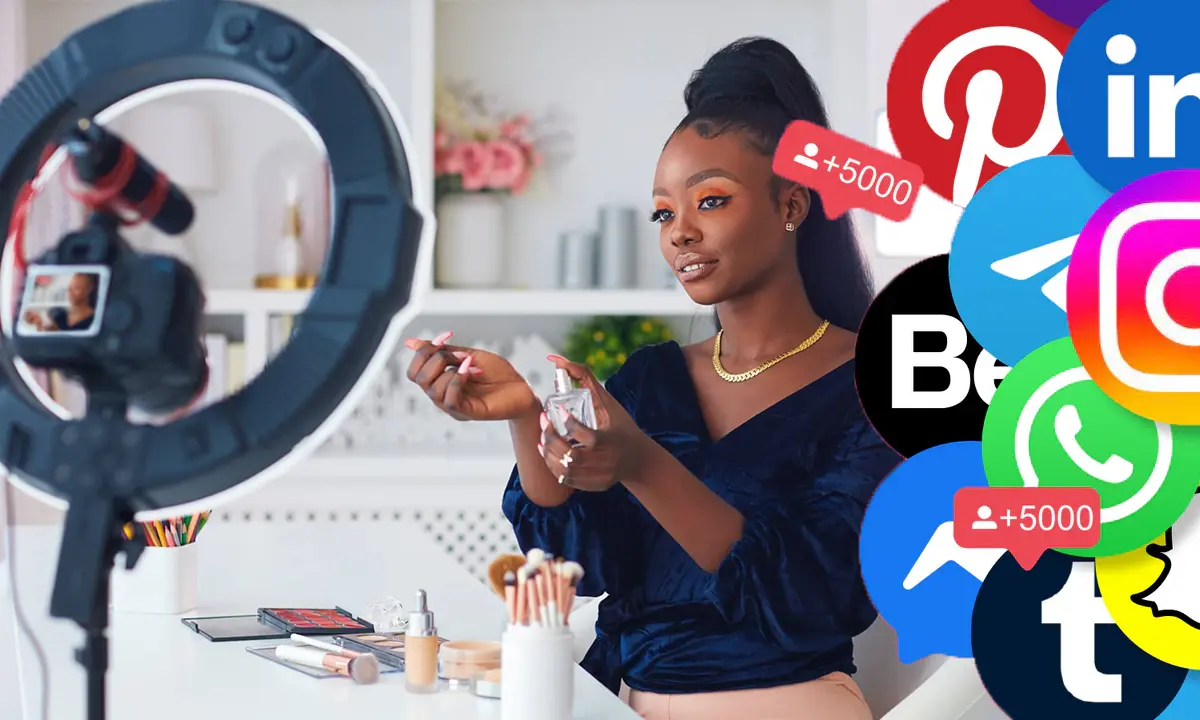
After choosing your niche, the next crucial step is deciding what type of content you’ll create and the platform where you’ll share it. The content type—whether videos, blog posts, photos, or infographics—should align with your strengths, audience preferences, and the platform’s strengths.
For example, short-form videos thrive on TikTok, while long-form tutorials shine on YouTube. Selecting the right combination of content type and platform allows you to engage your audience effectively while showcasing your unique voice.
Here’s a breakdown of popular platforms and the content they best support:
- TikTok: This platform excels at short-form, engaging videos that cater to trends, challenges, and quick educational or entertaining content. It’s a platform for reaching a younger, trend-savvy audience with bite-sized, highly shareable videos. Creators in niches like comedy, beauty, and DIY crafts find success here by leveraging the platform’s viral nature.
- Instagram: Perfect for sharing photos, stories, and short videos through Reels, Instagram's aesthetic focus makes it ideal for lifestyle, fashion, travel, and food content. Instagram also allows creators to engage through Stories, which offer behind-the-scenes glimpses, polls, and quick updates to deepen audience connection.
- YouTube: Supports long-form content, making it perfect for in-depth tutorials, product reviews, vlogs, and storytelling. Its audience spans all age groups, providing an opportunity to explore detailed content that educates, entertains, or inspires. Creators in tech, fitness, education, and travel often thrive here by creating content with longevity and depth.
- Twitch: A live-streaming platform ideal for creators focused on real-time interaction with their audience. It’s particularly popular among gamers, musicians, and creators hosting Q&A sessions or live events. Twitch allows for a more intimate connection with viewers through direct engagement during streams.
- Pinterest: Great for creators who specialize in DIY, home decor, fashion, recipes, and other visually driven niches. Pins function as evergreen content, allowing users to save ideas for future reference. Infographics, step-by-step guides, and mood boards work exceptionally well on this platform, catering to an audience seeking inspiration and solutions.
- X (formerly Twitter): X is a platform for quick updates, insights, and trending discussions. It works well for creators who want to share thoughts, news, or commentary in real-time. Writers, journalists, and entertainment creators often leverage X to engage with audiences through text, images, and short videos.
- Snapchat: This app is tailored to ephemeral content and is particularly effective for younger audiences. Creators can share behind-the-scenes content, quick tutorials, or updates through Stories and Spotlight. It’s a platform for creating a sense of urgency and exclusivity in your content.
5 Types of Content Creators
In today’s creator economy, many types of content creators play a unique role in engaging audiences and driving trends on platforms like Instagram, TikTok, and YouTube. Understanding these roles can help aspiring creators find their own voice and identify the best approach for reaching their target audience.
1. Influencers
Influencers are some of the most impactful and recognizable types of content creators. Through their social media platforms, they shape trends, build communities, and drive purchasing decisions.
They specialize in connecting deeply with their followers by sharing authentic, relatable content while seamlessly integrating brand partnerships. This blend of personal storytelling and promotional content has made influencers vital to modern marketing strategies.
Influencers often collaborate with brands to promote products or services, presenting them in ways that resonate with their audience. Whether through Instagram Stories, TikTok challenges, or YouTube vlogs, they leverage their platforms to bring brand messages to life while maintaining the personal tone their followers trust and admire.
By weaving sponsorships into their daily content, influencers create a natural, compelling connection between their audience and the brands they endorse.
Here are examples of prominent influencers:
Emma Chamberlain
Emma rose to fame with her quirky, relatable YouTube vlogs, which broke the mold of polished, highly produced content. Today, she’s a fashion icon, collaborating with brands like Louis Vuitton and Cartier while maintaining her down-to-earth charm. Emma’s ability to balance luxury partnerships with her signature authenticity has made her a trailblazer in the influencer space.
Addison Rae
Addison gained massive popularity on TikTok with her dance videos and now boasts millions of followers across multiple platforms. Beyond her TikTok stardom, she has ventured into acting, music, and fashion, collaborating with brands like American Eagle and launching her own beauty line, Item Beauty. Addison’s versatility and strong personal brand make her a powerful force in the influencer industry.
2. Educators and Tutors
Educators and tutors are influential content creators who dedicate their platforms to sharing knowledge, offering tutorials, and providing in-depth educational resources across a wide range of topics.
From explaining complex scientific theories to teaching practical skills like photography or cooking, these creators cater to audiences seeking personal growth and lifelong learning. By combining expertise with engaging presentation styles, they transform learning into an interactive and enjoyable experience.
Educational content often includes tutorials, step-by-step guides, or series focused on mastering a particular skill or subject. This approach allows creators to build lasting relationships with their audiences, who return for consistent value and actionable insights.
Here are examples of prominent educators and tutors on social media:
Vanessa Hill (BrainCraft)
Vanessa Hill blends psychology and neuroscience with creative storytelling on her YouTube channel BrainCraft. Through animations and relatable explanations, she explores topics like mental health, decision-making, and cognitive biases. Her engaging style helps audiences connect with science on a deeper, more personal level.
Matty Matheson
Matty Matheson is a chef and personality who educates audiences about cooking in his signature bold and boisterous style. With shows like Cookin' Somethin' on YouTube and collaborations with various culinary brands, Matty makes gourmet and comfort food accessible while injecting humor and authenticity into every lesson. His ability to engage audiences with his unfiltered enthusiasm makes him a favorite among food lovers.
3. Lifestyle Creators
Lifestyle creators offer a glimpse into their personal lives, sharing experiences, insights, and daily routines that resonate with their audiences. They cover a diverse range of topics, including travel, fashion, health, wellness, home decor, and productivity, often blending authenticity with inspiration.
Through their content, these creators connect with viewers who seek relatable yet aspirational stories, practical advice, or simply a source of inspiration for their own lifestyles.
Platforms like Instagram, YouTube, and TikTok, which thrive on visual and narrative-driven content, are their natural playgrounds. Their followers turn to them not only for inspiration but also for actionable tips and genuine insights, making lifestyle creators both influencers and trusted companions.
Here are two examples of top lifestyle creators in the industry:
Camila Coelho
Camila Coelho is a leading lifestyle influencer known for her sophisticated approach to fashion, beauty, and wellness. With a following across platforms like Instagram and YouTube, she shares high-end fashion looks, beauty tutorials, and insights into her jet-setting lifestyle. Camila also integrates wellness into her content, frequently discussing her fitness routines and self-care habits. Her collaborations with luxury brands like Dior and Lancôme highlight her influence in shaping aspirational yet attainable lifestyles.
Casey Neistat
Casey Neistat blends his love for filmmaking with lifestyle content that resonates on a global scale. Known for his cinematic vlogs on YouTube, Casey shares experiences ranging from travel adventures to reflections on family life and creativity. His storytelling style inspires viewers to see the extraordinary in everyday life. As a lifestyle creator, Casey has partnered with brands like Samsung and Nike while maintaining an authentic, unfiltered connection with his audience.
4. Niche Specialists
These creators focus their expertise and creativity on a specific field or area of interest, such as tech reviews, gaming, fitness, DIY crafts, or even niche hobbies like urban gardening or vintage collectibles.
These creators thrive by catering to a highly targeted audience, offering detailed, valuable insights that general content often overlooks. By specializing, they build loyal communities of like-minded followers who trust their expertise and engage deeply with their content.
The power of niche creators lies in their ability to establish authority and authenticity within their chosen field. Whether it’s testing the latest gadgets, sharing workout routines, or demonstrating crafting techniques, niche specialists provide content that informs, inspires, and resonates with their audience.
Here are prominent examples of niche specialists:
Marques Brownlee (MKBHD)
Marques Brownlee is one of the most respected voices in the tech review space. With millions of subscribers on YouTube, he provides in-depth reviews of smartphones, laptops, and other cutting-edge gadgets. Known for his crisp video production, clear explanations, and objective opinions, Marques has collaborated with top brands like Tesla, Apple, and Google. His ability to break down complex technology in an approachable way has solidified his status as a leading tech expert.
Joanna Gaines
As a prominent figure in the home and DIY niche, Joanna Gaines shares home decor tips, renovation ideas, and crafting inspiration through her Magnolia brand and social media channels. Joanna’s authentic and approachable style has helped her cultivate a massive following, making her a trusted authority in creating warm, functional, and stylish living spaces.
5. Entertainment Creators
These creators are masters of captivating audiences through humor, talent, and storytelling. Whether it’s crafting hilarious skits, producing engaging parodies, or delivering compelling narratives, these creators excel at providing pure enjoyment.
Entertainment creators thrive on platforms like YouTube, TikTok, and Instagram, where video content reigns supreme, and audiences are constantly searching for engaging, light-hearted escapism.
These creators often bring unique personalities, creativity, and production skills to their work, drawing in diverse audiences. They also explore a variety of formats, from short-form comedic TikToks to high-production web series on YouTube, ensuring there’s something for everyone.
Here are examples of prominent entertainment creators:
Viva La Dirt League (VLDL)
Viva La Dirt League is a YouTube group that specializes in gaming-inspired comedy. Their Epic NPC Man series hilariously pokes fun at video game logic, while their other shows, like PUBG Logic and Bored, explore niche gaming humor and workplace comedy. Known for their high production quality and clever writing, VLDL has cultivated a loyal fanbase by delivering content that resonates deeply with gamers and comedy enthusiasts alike.
Charlotte Dobre
Charlotte Dobre is a TikTok and YouTube creator who specializes in relatable and comedic reaction content. Her videos often highlight social faux pas, awkward situations, and viral internet moments, offering her unique commentary with a dose of humor and charm. Charlotte’s ability to connect with her audience through shared experiences and her hilarious delivery has made her one of the most popular entertainment creators in her niche.
Choosing Your Niche
One of the first and most important steps in becoming a successful content creator is to select a specific niche. Popular niches include fitness, travel, tech, beauty, and food, but there are endless possibilities to explore.
A well-defined niche helps you attract a specific audience and build authority within your area of expertise. Your niche should align with your personal interests, skills, and the needs of your audience. Here’s how you can choose a niche:
Identify Your Interests and Skills
Start by reflecting on what excites you, what you’re knowledgeable about, and what you can talk about endlessly. This could be anything from sharing fitness routines to explaining tech gadgets, teaching cooking techniques, or even showcasing an artistic hobby.
A genuine interest in your niche ensures that you’ll remain motivated and enthusiastic about creating content, even when challenges arise. It also adds authenticity, which resonates strongly with audiences.
Research Audience Demand
Once you’ve identified potential niches, research whether there is an audience for them. Use tools like Google Trends to explore the popularity of related keywords and analyze trending topics on platforms like YouTube, TikTok, and Instagram to gauge interest.
For instance, if you’re considering a niche like sustainable fashion, look at hashtags like #SustainableStyle or #EcoFashion to see how much engagement they generate. Identifying an audience that actively seeks content in your niche ensures your efforts won’t go unnoticed.
Analyze Competitors
Look at creators who are already succeeding in your chosen niche. Study their content, audience interactions, and strategies to understand what works and where there’s room for improvement.
For example, if you’re entering the tech review niche, examine creators like Marques Brownlee or Linus Tech Tips to see how they present content and engage their audience.
Use this analysis to carve out your unique perspective, whether it’s focusing on a specific subtopic, adopting a distinct style, or providing a fresh take on existing ideas.
Remember, choosing a niche ensures that your content creation efforts have a clear direction and appeal to a specific target audience, which helps you grow a loyal following over time.
Essential Tools for Beginner Content Creators
Creating professional-looking content requires specific tools to enhance both quality and organization. As a beginner, having the right equipment and resources can make a significant difference in the production process and overall audience engagement. Here are four essential tools to help you get started, along with references for further guidance:
1. Cameras and Microphones
High-quality visuals and clear audio are crucial for creating engaging content that holds your audience’s attention. Platforms like YouTube, TikTok, and Instagram are highly visual, and poor quality can deter potential followers.
- Camera: Invest in a reliable camera that suits your budget. Entry-level DSLR cameras like the Canon EOS Rebel or compact options like the Sony ZV-1 offer excellent video quality for beginners. For those on a tighter budget, a high-quality smartphone camera can also do the job.
- Microphone: Clear audio is just as important as visuals. External microphones like the Blue Yeti for desk setups or the Rode VideoMicro for on-the-go shooting provide excellent sound quality without breaking the bank.
Additional Resources:
10 Best Streaming Cameras for Creators
10 Best Streaming Microphones in 2024
2. Editing Software
Editing is where the magic happens, turning raw footage or graphics into polished, engaging content. User-friendly software can simplify this process for beginners:
- Video Editing: Tools like iMovie (Mac) and DaVinci Resolve (cross-platform) are excellent for beginners, offering intuitive interfaces for trimming, transitions, and color correction. For more advanced features, Adobe Premiere Pro is a top choice.
- Graphic Design: Canva is an accessible and affordable tool for creating social media posts, thumbnails, and banners. Its drag-and-drop interface and templates make it ideal for non-designers.
3. Design and Planning Tools
Consistency is key in content creation, and tools that help with planning and organization are invaluable.
- Trello: A visual task management tool that allows you to track content ideas, production stages, and posting schedules. Its drag-and-drop cards make it easy to stay organized.
- Google Calendar: Great for scheduling and ensuring you stick to a consistent posting routine. Sync it with your mobile device for reminders and better time management.
- Social Media Management Tools: Platforms like Buffer and Hootsuite let you plan, schedule, and post content across multiple platforms, streamlining your workflow.
Additional Resource:
Free Social Media Management Tools for Creators
4. Analytics Tools
Understanding what works and what doesn’t is essential for growth, and analytics tools help you track performance metrics like views, likes, shares, and audience demographics.
- Google Analytics: A powerful tool for tracking website and blog performance. It provides insights into where your traffic is coming from, which pages are most popular, and how users interact with your content.
- Social Media Insights: Built-in analytics on platforms like Instagram, YouTube, and TikTok allow you to monitor post engagement, audience growth, and demographics. Use this data to fine-tune your content strategy and cater to your audience’s preferences
These tools not only help you create high-quality content but also establish a professional and organized approach to your content creation journey. Start with these essentials, and as you grow, consider upgrading or expanding your toolkit to meet your evolving needs.
Developing a Content Strategy
A clear content strategy is essential for staying organized, consistent, and in tune with your audience’s expectations. Here are four key elements to consider:
1. Setting Goals
Goals provide a clear direction for your efforts, whether it’s gaining a specific number of followers, increasing engagement rates, or earning a set amount of income through monetization.
For example, you might aim to reach 1,000 YouTube subscribers in three months or achieve a 10% engagement rate on your Instagram posts.
Breaking larger goals into smaller milestones can make them more manageable and allow you to celebrate progress along the way.
In the end, regularly reviewing your goals and analyzing your performance helps you identify what’s working, where adjustments are needed, and how to refine your strategies for better results.
2. Researching Content Ideas
Start by exploring trending topics within your niche to understand what’s capturing attention. Platforms like TikTok’s "For You" page, YouTube’s "Trending" tab, and Instagram’s "Explore" page are excellent tools for identifying popular themes and formats.
Additionally, analyze the content of successful competitors to see which types of posts generate the most likes, comments, and shares.
Consider using keyword research tools like Google Trends or TubeBuddy to uncover topics your target audience is searching for.
Moreover, pay attention to seasonal trends, current events, and audience feedback, as these can inspire timely and relevant content ideas that resonate with your audience and encourage higher engagement.
Leveraging these elements allows you to create content that feels current, relatable, and responsive to your audience's interests, ultimately strengthening your connection with them.
3. Creating a Content Calendar
Having a calendar allows you to organize your content ideas, plan posts in advance, and ensure you’re delivering value regularly.
Use tools like Google Calendar, Trello, or Notion to schedule your content, noting key dates such as holidays, product launches, or trending moments relevant to your niche.
Next, incorporate a variety of content types—such as videos, blogs, photos, and interactive posts—to keep your audience interested and entertained. A well-structured calendar also helps you avoid last-minute scrambling, ensuring every piece of content aligns with your overall strategy.
Regularly reviewing and updating your calendar ensures that you stay adaptable while maintaining a consistent publishing rhythm that resonates with your audience.
4. Analyzing and Adjusting
Regularly review platform analytics, such as YouTube Studio, TikTok Analytics, or Instagram Insights, to track key performance metrics like views, engagement rates, click-through rates, and follower growth.
Look for patterns in your content—if a particular type of post, such as tutorials or humor-driven content, consistently garners high engagement, incorporate more of that style into your strategy.
Additionally, identify underperforming content to understand what might need improvement, whether it’s timing, format, or messaging.
Experiment with new ideas based on your findings and monitor their impact. By using data to inform your decisions, you can refine your content, improve audience satisfaction, and achieve your goals more effectively.
Tips for Creating High-Quality Content
Creating professional and engaging content is essential for retaining your audience and attracting new followers. Here are three top tips:
- Be Authentic and Value-Driven: Authenticity is the foundation of trust. When you share content that reflects your true self—your interests, passions, and experiences—you create a genuine connection with your audience. Beyond authenticity, ensure your content provides value, whether it’s through tips, insights, tutorials, or entertaining stories.
- Use High-Quality Visuals and Sound: Visual and audio quality can make or break your content, especially on platforms like YouTube, Instagram, and TikTok, where appearance is everything. Invest in tools like a good camera, proper lighting, and an external microphone to enhance production value. Even small adjustments, like shooting in natural light or using free audio-cleanup software, can significantly improve your content.
- Incorporate Storytelling: Storytelling is a powerful way to create an emotional connection with your viewers. People remember stories far better than isolated facts or data, so use them to add depth and relatability to your content. For example, a travel creator might share a memorable experience from a trip, complete with challenges and lessons learned, rather than just listing the attractions visited.
Growing Your Audience and Engaging with Followers
Building an engaged audience requires active engagement and strategic growth tactics. Here are four ways to attract followers and boost engagement:
- Collaborate with Other Creators: Partner with influencers or content creators in your niche who share a similar target audience. These collaborations can take many forms, from co-hosted live streams to guest appearances in each other’s videos. For example, if you’re a fitness creator, you might team up with a nutritionist to create content that combines workout tips with meal-planning advice. Not only does this help you reach a broader audience, but it also adds variety to your content and builds credibility through association.
- Engage Actively: Take the time to respond to comments on your posts, answer questions thoughtfully, and reply to direct messages. These small interactions make your audience feel valued and heard. Additionally, encourage engagement by asking for opinions, creating polls, or running contests. For instance, a beauty creator might ask their audience to vote on their next makeup tutorial. The more interactive your content feels, the stronger the connection with your followers.
- Optimize for SEO and Hashtags: Using SEO techniques and relevant hashtags helps increase your visibility on search engines and social media platforms. For example, a YouTuber could include specific keywords in their video titles and descriptions, such as "how to edit photos in Lightroom." Similarly, Instagram creators can use trending and niche-specific hashtags like #TravelTips or #FitnessJourney to reach their target audience. Regularly analyze your platform’s insights to identify which keywords and hashtags drive the most traffic, and refine your strategy accordingly.
- Host Live Sessions and Q&As: Live sessions offer a unique opportunity to connect with your audience in real-time, fostering personal connections and loyalty. Use these sessions to host Q&As, share behind-the-scenes content, or discuss trending topics in your niche. For example, a tech reviewer might use a live session to answer questions about the latest smartphone release, while a travel creator could share live updates from an exciting destination. These interactions create a sense of immediacy and exclusivity, encouraging your followers to engage and return for future content.
Monetizing Your Content Creation Journey
As your grows, you can begin monetizing your content. Here are four popular monetization methods:
1. Ad Revenue on Platforms
Ad revenue is a straightforward way to earn money based on the engagement and views your content generates. Platforms like YouTube and TikTok offer creators opportunities to earn through ad programs:
- YouTube: Once you meet eligibility requirements (1,000 subscribers and 4,000 watch hours in the last 12 months), you can join the YouTube Partner Program. You’ll earn a share of the ad revenue from pre-roll, mid-roll, and display ads shown during your videos. For example, tech reviewers like Marques Brownlee generate significant income from ads shown on their popular gadget review videos.
- TikTok: Through the TikTok Creator Rewards Program, eligible creators earn money based on video performance, including views, likes, and engagement. Viral creators in niches like dance or comedy often see consistent revenue from their high-performing content.
2. Brand Sponsorships and Partnerships
Brand collaborations are one of the most lucrative income streams for creators. By partnering with companies that align with your niche, you can create sponsored content that highlights products or services your audience will appreciate:
- Example on Instagram: A fashion creator might collaborate with clothing brands like Revolve, sharing styled looks through posts and Reels.
- Example on YouTube: Fitness influencers often partner with supplement companies to showcase products during workout tutorials.
- Example on TikTok: Creators like beauty influencers frequently promote skincare brands, weaving product demonstrations into tutorials. The key to success is ensuring sponsored content feels authentic and aligns with your audience’s interest
3. Affiliate Marketing
Affiliate marketing allows creators to earn commissions by sharing product links with their followers. When a viewer makes a purchase through the link, the creator earns a percentage of the sale, making it a win-win for both creators and brands.
- Amazon Associates: Many YouTubers leverage Amazon affiliate links in their video descriptions, directing viewers to gear, books, or tools they recommend. For instance, a home decor creator might link to stylish furniture pieces or decor items showcased in a room makeover video.
- TikTok Affiliate Program: TikTok’s Affiliate Program enables creators to link products directly within their videos or profiles. For example, a beauty influencer could feature a skincare product in a tutorial and provide an affiliate link in the video description, earning a commission for each sale generated. This program streamlines the shopping experience for followers while rewarding creators for their influence.
4. Offering Exclusive Content
Providing premium content for your most loyal fans is another excellent way to monetize. Platforms like Fourthwall, Patreon, and Twitch allow creators to offer tiered memberships for access to exclusive perks:
- Fourthwall: Content creators on Fourthwall can bundle exclusive videos, merchandise, or behind-the-scenes updates for subscribers, creating a holistic monetization strategy.
- Patreon: A podcast host might offer patrons early access to episodes, bonus content, and personalized shoutouts.
- Twitch: Gamers can offer subscriber-only streams, custom emotes, and perks to their paying followers, fostering a closer connection with their community.
Start Your Content Creation Journey with Fourthwall
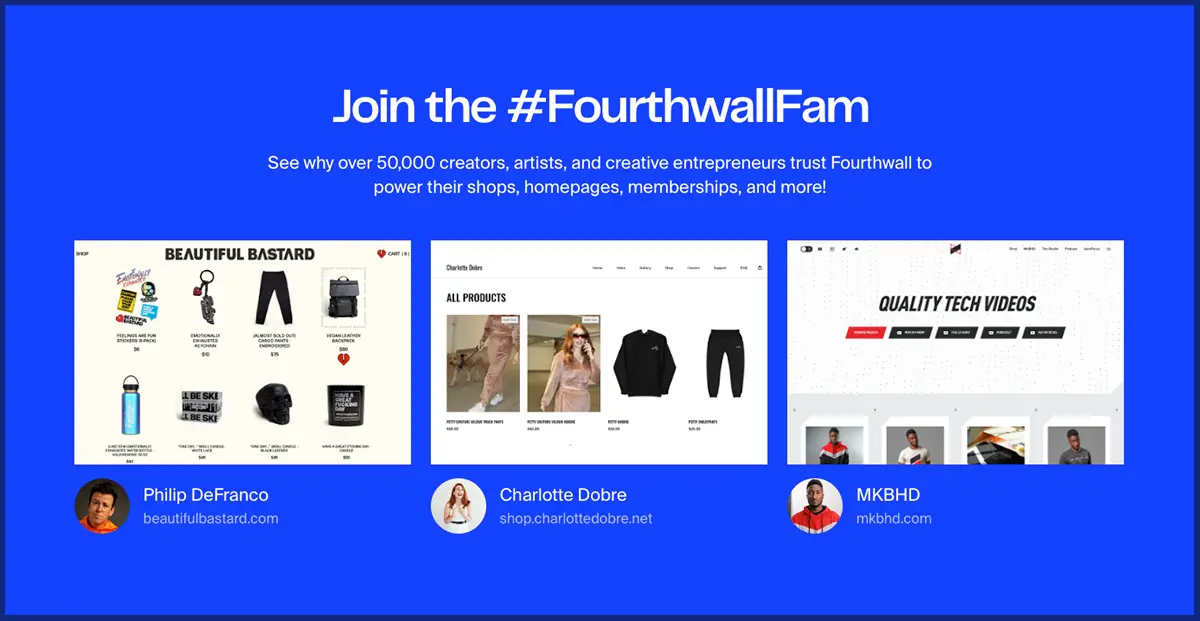
Take your content creation to the next level with Fourthwall, a platform designed to empower creators with all the tools they need to grow, engage, and monetize. Fourthwall offers customizable storefronts that let you showcase your unique brand while selling a wide range of products directly to your audience—from merchandise to exclusive digital content.
Engage your community with features like membership tiers, personalized fan interactions, and integrated tools to connect seamlessly across platforms. Fourthwall also supports creators with options for selling videos, hosting exclusive content, and integrating with platforms like YouTube, TikTok, and Twitch to maximize visibility and revenue potential.
Whether you're looking to launch a product line, build a loyal fanbase, or explore creative ways to monetize your work, Fourthwall provides the flexibility and support to make it happen. Start your content creation journey with Fourthwall today and unlock the tools you need to turn your passion into a thriving business.
Frequently Asked Questions
What Platform is Best for Beginner Content Creators?
Beginners should start with a platform that aligns with their strengths and the type of content they love creating, ensuring they connect authentically with their target audience.
TikTok is perfect for creators who thrive on short-form, trend-driven content, offering quick visibility and engagement with a younger audience, while YouTube is ideal for creators who want to dive deeper with long-form content like tutorials, vlogs, or reviews, attracting a diverse audience and providing robust monetization options.
Instagram, on the other hand, excels in visual storytelling, making it a top choice for creators in niches like fashion, travel, and lifestyle, thanks to its versatile content formats like Reels, Stories, and Posts.
Ultimately, the best platform for any content creator hinges on their specific niche, target audience, and the type of content they enjoy creating.
How Can I Find My Target Audience?
To find your target audience, start by researching creators in your niche who have already built a following. Analyze their content, engagement patterns, and the types of audiences they attract.
Use platform insights like Instagram Analytics, YouTube Studio, or TikTok Analytics to gather data on who engages with your content, including age, location, gender, and interests.
Additionally, monitor how your audience interacts with your posts—what content gets the most likes, shares, or comments? Then, engage directly with your followers by asking questions, running polls, or inviting feedback to better understand their preferences.
This combination of research, analytics, and interaction will help you tailor your content to meet the needs and interests of your ideal audience.
How Often Should I Post Content?
The frequency of the amount of content you post depends on your platform and audience preferences, but consistency is key to building trust and maintaining engagement.
On fast-paced platforms like TikTok and Twitter, posting daily or multiple times a day can help keep your content visible amidst constant updates.
For platforms like Instagram and YouTube, where quality often outweighs quantity, posting 2–4 times a week or once a week, respectively, may suffice, as long as your content remains valuable and well-produced.
Remember to pay attention to analytics and audience feedback to refine your posting schedule, ensuring you deliver consistently without compromising the quality of your content.

